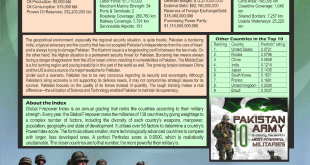Comprehension is another important part of English (Précis & Composition) paper for CSS. In this 20-mark question, aspirants are given a passage that is, according to FPSC’s syllabus for CSS, rich in substance but not very technical or discipline-specific. The paragraph is followed by five questions – each carrying 4 marks – that are to be answered by the aspirants. In this part of the series, we will discuss some important techniques to get maximum marks from this question also.
Introduction
The word comprehension actually means ‘grasping with intellect’ and ‘understanding’. It is the ability to read and understand a given text and to answer questions based on that. You will be presented with passages drawn from a variety of subject areas, including humanities, sciences, latest happenings in society, and so on. The questions following the paragraph will ask you to analyze what is stated in the passage and would have to identify underlying assumptions and implications.
10 Steps to Follow
1. Read the passage at least twice and understand its contents well. This should not take more than five minutes for a small and ten for a long passages.
2. Do not read the questions first. This may tempt you to look for only particular information in the passage and consequently, affect full comprehension. It is important to first understand the passage before you go to the questions because if the questions are not very specific, you may commit a lot of mistakes. Generally, the passages have a mix of implied ideas and specific detail type of questions.
3. Eliminate regression, i.e., going back to the lines you have just read. This is out of habit developed over years of wrong or half-hearted reading. This must be done away with as the maximum time you should take to answer all the questions after reading a passage is about seven minutes. Regression is the result of lack of concentration and assumptions.
4. Do not let your own knowledge (or lack of it) interfere with the contents of the passage. Do not make any attempt to agree or disagree with the author.
5. Your principal task in attempting a comprehension passage should comprise:
i. Finding the topic. The topic must be precise. Generally the topic is found either in the first or in the last line.
ii. Finding the main idea. This can be a definition, a classification, a purpose or an elaboration of the topic; often the topic and the main idea are the same.
iii. Finding major supporting details. The supporting details modify, explain or elaborate the main idea. You should learn to recognize these supporting details that explain, illustrate, compare and contrast, show cause-effect relationship or merely restate the main idea in other words.
6. Underline the words you don’t know the meaning of. Try to relate them to the given context.
7. Resort to sentence analysis and break a sentence into parts, looking for answers to who, what, whom, when, where, which, why and how.
8. Locate reference words and check what they refer to.
9. Underline signal words and look for what they indicate.
10. If the passage contains more than one paragraph, resort to paragraph analysis in the manner given above (5 to 10).
Four Essential Steps
Step 1: The very first step is to read the questions quickly. This gives you some idea of what you should be looking for as you read the passage.
Step 2: The second step is to read the passage at your fastest rate. The questions that have located in your subconscious after reading the questions will force you more conscious as you come across anything that is relevant or important if.
Step 3: Again re-read the question, one at a time. You will get some idea of the location in the passage of material that answers the questions. If you have no ideas as to location in the passage of material that answers the questions, go on the next question; with this step you may solve the question. Only one or two question may be left after this step.
Step 4: Re-read the question carefully that is still unanswered. Try to find the reason. They may be analytical in nature, requiring the analysis of a certain part of the passage. One of the most important aspects of this is the vocabulary.
Sample Passage
Education ought to teach us how to be in love and what to be in love with. The great things of history have been done by the great lovers, by the saints and men of science, and artists, and the problem of civilization is to give every man a chance of being a saint, a man of science, or an artist. But this problem cannot be attempted, much less solved, unless men desire to be saints, men of science, and artists. And if they are to desire that continuously and consciously they must be taught what it means to be these. We think of the man of science or the artist, if not of the saint, as a being with peculiar gifts, not as one who exercises, more precisely and incessantly perhaps, activities which we all ought to exercise. It is a commonplace now that art has ebbed away out of our ordinary life, out of all the things which we use, and that it is practiced no longer by workmen but only by a few painters and sculptors. That has happened because we no longer recognize the aesthetic activity of the spirit, so common to all men. We do not know that when a man makes anything he ought to make it beautiful for the sake of doing so, and that when a man buys anything he ought to demand beauty in it, for the sake of beauty. We think of beauty if we think of it at all as a mere source of pleasure, and therefore it means to us ornament, added to things for which we can pay extra as we choose. But beauty is not an ornament to life, or to the things made by man. It is an essential part of both. The aesthetic activity, when it reveals itself in things made by men, reveals itself in design, just as it reveals itself in the design of all natural things. It shapes objects as the moral activity shapes actions, and we ought to recognize it in the objects and value it, as we  recognize and value moral activity in actions. And as actions empty of the moral activity are distasteful to us, so should objects be that are empty of the aesthetic activity. But this is not so with most of us. We do not value it; do not even recognize it, or the lack of it, in the work of others. The artist, of whatever kind, is a man so much aware of the beauty of the universe that he must impart the same beauty to whatever he makes. He has exercised his aesthetic activity in the discovery of the beauty in the universe before he exercises it in imparting beauty to that which he makes. He has seen things in that relation in his own work, whatever it may be. And just as he sees that relation for its own sake, so he produces it for its own sake and satisfies the desire of his spirit in doing so. And we should value his work; we should desire that relation in all things made by man, if we too have the habit of seeing that relation in the universe, and if we knew that, when we see it, we are exercising an activity of the spirit and satisfying a spiritual desire. And we should also know that work without beauty means unsatisfied spiritual desire in the worker; that it is waste of life and common evil and danger, like thought without truth, or action without righteousness.
recognize and value moral activity in actions. And as actions empty of the moral activity are distasteful to us, so should objects be that are empty of the aesthetic activity. But this is not so with most of us. We do not value it; do not even recognize it, or the lack of it, in the work of others. The artist, of whatever kind, is a man so much aware of the beauty of the universe that he must impart the same beauty to whatever he makes. He has exercised his aesthetic activity in the discovery of the beauty in the universe before he exercises it in imparting beauty to that which he makes. He has seen things in that relation in his own work, whatever it may be. And just as he sees that relation for its own sake, so he produces it for its own sake and satisfies the desire of his spirit in doing so. And we should value his work; we should desire that relation in all things made by man, if we too have the habit of seeing that relation in the universe, and if we knew that, when we see it, we are exercising an activity of the spirit and satisfying a spiritual desire. And we should also know that work without beauty means unsatisfied spiritual desire in the worker; that it is waste of life and common evil and danger, like thought without truth, or action without righteousness.
Questions
1. What has been lamented in the text?
2. What is the difference between an ordinary man and an artist?
3. How can we make our lives beautiful and charming?
4. What does the writer actually mean when he says, “Beauty is not an ornament to life”?
5. Do art and beauty affect our practical life and morals? Justify whether you agree or disagree.
Answers
1. The author laments that element of beauty has been limited only to the works of artists and scientists, who are supposed to possess a rare sense for appreciation of beauty. Art has disappeared from the lives of ordinary people and workmen. It is unfortunate that common people and workmen are oblivious to the fact that aesthetics is an essential part of life of every man, not just the prerogative of a few chosen people. The fact is that aesthetic activity is activity of the spirit, and sense to appreciate beauty is common to all human beings.
2. Artists are great lovers of life and they value beauty as a principle of life. It is not that they are endowed with some exceptional quality. All human beings possess this capacity, but the difference is that the artists use this ability with greater concentration and consistency. For the common man, beauty is only a supplementary factor, but an artist values beauty for the sake of beauty.
3. We can make our lives beautiful and charming by realizing the importance of aesthetic aspects of every activity of life. We must discover the principle of beauty in everything we do. It would add charm to life.
4. By this expression, the writer wants to stress that beauty is not just a superficial decoration – a discretionary choice. The writer believes that beauty is an integral part of life. He thinks that the relationship between life and beauty is not optional but compulsory. It is not a mere decoration but the very essence of life.
relationship between life and beauty is not optional but compulsory. It is not a mere decoration but the very essence of life.
5. Art and aesthetics deeply influence our lives. These are not only a source of sensuous pleasure but also give us spiritual satisfaction. Discovery of relationship in all things, made by man or nature, is a spiritual activity. Life without beauty will be spiritually barren. Such work will be dangerous and immoral. It is interesting to note that in ancient Greek language, there was the same word for beauty and goodness. I tend to agree with John Keats who rightly said that beauty is truth and truth beauty.
Analogies
1. Simple : Complex :: Trivial : ______
(a) Irrelevant (b) Inconspicuous
(c) Significant (d) Permanent
2. Neophyte : Novice :: Pursuit : ______
(a) Restraint (b) Passion
(c) Speed (d) Quest
3. Regard : Esteem :: Ambivalence : ______
(a) Injustice (b) Withdrawal
(c) Uncertainty (d) Resemblance
4. Citizen : Nation :: Tree : ______
(a) Branch (b) Bird
(c) Forest (d) Root
5. Elated : Despondent :: Enlightened :______
(a) Aware (b) Miserable
(c) Tolerant (d) Ignorant
6. Divulge : Conceal :: Conform : ______
(a) Offer (b) Retain
(c) Differ (d) Construe
7. Restrain : Curb :: Recant : ______
(a) Resent (b) Entertain
(c) Retract (d) Foretell
8. Admire : Despise :: Praise : ______
(a) Ravage (b) Surrender
(c) Admonish (d) Warn
9. Advance : Retreat :: Curtail : ______
(a) Consume (b) Prolong
(c) Discard (d) Damage
10. Implant : Embed :: Expel : ______
(a) Beseech (b) Oust
(c) Examine (d) Accept
11. Assemble : Convene :: Categorize : ______
(a) Congregate (b) Alternate
(c) Systematize (d) Dismiss
12. Grind : Crush :: Demolish : ______
(a) Pulverize (b) Check
(c) Steam (d) Divulge
13. Continuation : Sequel :: Scheme : ______
(a) Supplication (b) Management
(c) Plot (d) Aftermath
14. Phase : Segment :: Epoch : ________
(a) Institution (b) Document
(c) Emotion (d) Era
15. Declare : Affirm :: Cringe : ________
(a) Scorn (b) Cower
(c) Reason (d) Arrange
Vocabulary
1. Grotesque
(a) Hideous (b) Rumpled
(c) Foolish (d) Frenzied
ANT: Appealing, Comely
2. Garbled
(a) Lucid (b) Unintelligible
(c) Veiled (d) Implied
ANT: Comprehensible, Scrutable
3. Tote
(a) Acquire (b) Carry
(c) Abandon (d) Total
ANT: Discard, Leave
4. Insipid
(a) Unpalatable (b) Exhilarating
(c) Overbearing (d) Elaborate
ANT: Tasty, Interesting
5. Hurly-burly
(a) Spacious (b) Hastily
(c) Commotion (d) Unpleasant
ANT: Calm, Order
6. Stoical
(a) Miserly (b) Flappable
(c) Introvert (d) Impassive
ANT: Expressive, Emotional
7. Pernicious
(a) Malevolent (b) Awkward
(c) Successful (d) Commendatory
ANT: Beneficial, Benign
8. Meretricious
(a) Meritorious (b) Pretentious
(c) Foolish (d) Promising
ANT: Natural, Genuine
9. Pungent
(a) Acrid (b) Small
(c) Taste (d) Controversial
ANT: Bland, Mild
10. Levity
(a) Complexity (b) Blitheness
(c) Longevity (d) Curiosity
ANT: Seriousness, Gravity
11. Incendiary
(a) Pleasurable (b) Provocative
(c) Scary (d) Mild
ANT: Conciliatory, Mollifying
12. Candour
(a) Eloquence (b) Bluntness
(c) Popularity (d) Adamance
ANT: Guardedness, Evasiveness
13. Galling
(a) Exasperating (b) Generous
(c) Gratifying (d) Pleasing
ANT: Friendly, Amiable
14. Piffling
(a) Abundant (b) Excessive
(c) Ridiculous (d) Inadequate
ANT: Adequate, Sufficient
15. Sortie
(a) Outlook (b) Taste
(c) Specialty (d) Offensive
ANT: Tryst, Rendezvous
16. Callow
(a) Naive (b) Clean
(c) Garnished (d) Virtuoso
ANT: Mature, Experienced
17. Haggard
(a) Reclusive (b) Raddled
(c) Livid (d) Greenhorn
ANT: Fresh, Healthy
18. Jocular
(a) Powerful (b) Strict
(c) Jolly (d) Lenient
ANT: Solemn, Earnest
19. Chagrin
(a) Courteousness (b) Irritation
(c) Negligence (d) Conviction
ANT: Glee, Rapture
20. Erudite
(a) Intriguing (b) Harmonious
(c) Judicious (d) Knowledgeable
ANT: Ignorant, Ill-educated
21. Conscientious
(a) Noble (b) Repentant
(c) Assiduous (d) Flaccid
ANT: Lackadaisical, Blasé
22. Flaccid
(a) Placid (b) Commotion
(c) Showy (d) Uninspiring
ANT: Vivacious, Vibrant
23. Flummox
(a) Please (b) Inflame
(c) Obfuscate (d) Irritate
ANT: Enlighten, Notify
24. Cavil
(a) Chuckle (b) Moan
(c) Stupefy (d) Gag
ANT: Laud, Appreciate
25. Sprightly
(a) Vivacious (b) Chubby
(c) Moaning (d) Livid
ANT: Sluggish, Lethargic
26. Mendacious
(a) Envious (b) Covetous
(c) Deceitful (d) Conciliatory
ANT: Honest, Truthful
27. Ephemeral
(a) Euphoric (b) Slighted
(c) Transient (d) Elated
ANT: Long-lived, Permanent
28. Blathering
(a) Garrulous (b) Secluded
(c) Blatant (d) Outspoken
ANT: Taciturn, Reticent
29. Aghast
(a) Appalled (b) Tweaked
(c) Gaping (d) Henpecked
ANT: Pleased, Interested
30. Delirious
(a) Complaining (b) Babbling
(c) Wanton (d) Petrified
ANT: Lucid, Coherent
 Jahangir's World Times First Comprehensive Magazine for students/teachers of competitive exams and general readers as well.
Jahangir's World Times First Comprehensive Magazine for students/teachers of competitive exams and general readers as well.




